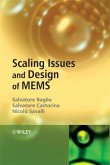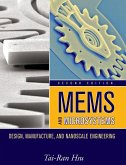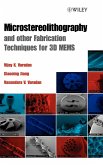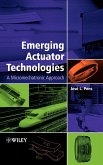Smart technology is a progressive field that is currently being used to address many challenges in aerospace, automotive, civil, mechanical, biomedical and communication engineering disciplines. Influenced by biological systems, smart materials are often attached to or embedded into structural systems to enable them to sense disturbances, process the information and react to it. This therefore improves the overall reliability, efficiency and sustainability of a system or structure. Now, miniaturisation has resulted in faster devices with reduced fabrication costs and the possibility of integration with electronics, thereby simplifying systems and reducing the power requirements.
This book presents a unified treatment of the design and modelling of smart material systems and Micro-Electro-Mechanical Systems (MEMS), addressing both fabrication issues and outlining important potential application areas for the technology. With numerous case studies and illustrative examples, Varadan et al. cover in detail:
_ the fundamentals of smart systems and materials characterization;
_ design principles for sensors and actuators, analysing bulk sensors, micro sensors and some commonly available devices such as gyroscopes, pressure sensors and chemical and biosensors;
_ the modelling of smart systems, including special techniques for studying MEMS- and carbon nanotube (CNT) -based sensors and actuators;
_ fabrication techniques, providing details of bulk and surface micromachining concepts for silicon-based processing of MEMS and polymer-based systems;
_ practical application issues, using smart technology to solve real world problems in a range of engineering fields.
A valuable reference for students taking courses in smart sensors, actuators and systems, Smart Material Systems and MEMS: Design and Development Methodologies is also useful for practising engineers, researchers and developers of microsystems working in industry.
Hinweis: Dieser Artikel kann nur an eine deutsche Lieferadresse ausgeliefert werden.
This book presents a unified treatment of the design and modelling of smart material systems and Micro-Electro-Mechanical Systems (MEMS), addressing both fabrication issues and outlining important potential application areas for the technology. With numerous case studies and illustrative examples, Varadan et al. cover in detail:
_ the fundamentals of smart systems and materials characterization;
_ design principles for sensors and actuators, analysing bulk sensors, micro sensors and some commonly available devices such as gyroscopes, pressure sensors and chemical and biosensors;
_ the modelling of smart systems, including special techniques for studying MEMS- and carbon nanotube (CNT) -based sensors and actuators;
_ fabrication techniques, providing details of bulk and surface micromachining concepts for silicon-based processing of MEMS and polymer-based systems;
_ practical application issues, using smart technology to solve real world problems in a range of engineering fields.
A valuable reference for students taking courses in smart sensors, actuators and systems, Smart Material Systems and MEMS: Design and Development Methodologies is also useful for practising engineers, researchers and developers of microsystems working in industry.
Hinweis: Dieser Artikel kann nur an eine deutsche Lieferadresse ausgeliefert werden.







